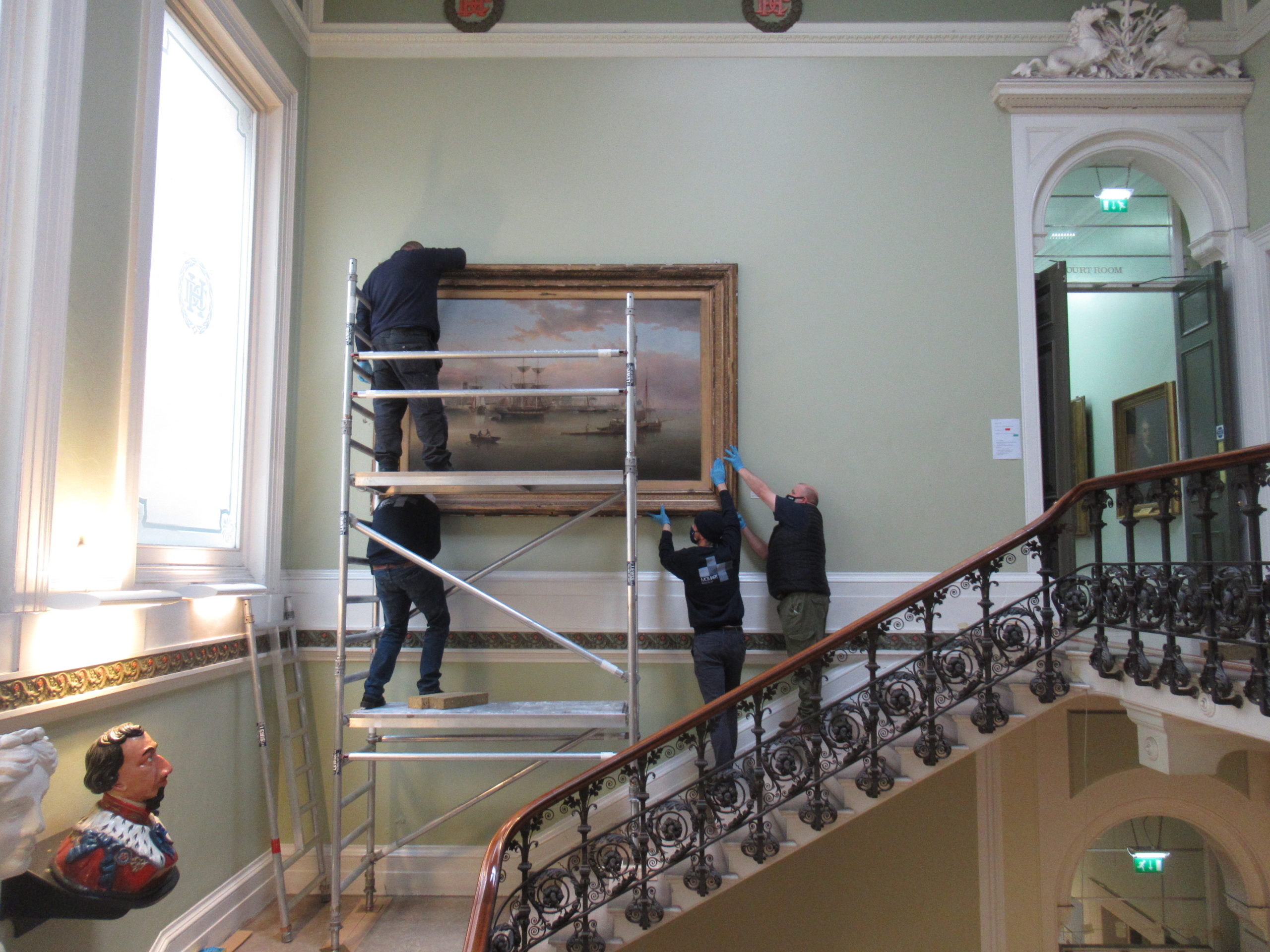A number of Hull’s historic maritime paintings from the Hull Maritime Museum, with some dating back to the 1700s, have been sent to a specialist laboratory for conservation.
Following a survey of 400 paintings, the 12 selected paintings that depict a variety of maritime themes with important links to Hull’s rich maritime history have been de-installed, packed and transported to a conservation studio in Lincoln.
Works include two very large oil paintings, Calm on the Humber (c.1868) by Henry Redmore, and HMS Britannia by John Ward (c.1847), as well as an iconic work of Richard Widdas showing the Hull whaler Diana trapped in the Arctic ice in 1866 and an acrylic painting of the stern trawler Gaul (J.Wood c.1983) that was tragically sank in February 1974 in storm conditions in the Barents Sea, north of Norway, along with its 36-stong crew.
The two large paintings have been removed from the museum’s main stairwell walls using specialist equipment including a mobile stair access tower.
Technicians lowered the two paintings that were mounted high on the two walls, in a controlled way.
The remaining paintings were packed in cases having been in long-term storage. In addition to the 12 paintings, the unique 15ft wide flag of the Hull whaler Truelove (b.1764) suspended from the ceiling in the ground floor was lowered and packed away.
Councillor Daren Hale, Portfolio Holder for Economic Investment, Regeneration and Planning, Land and Property, said: “Many of the works have been on display for decades and required careful removal using specialist access equipment.
“The most challenging tasks were the removal of the two large works overlooking the grand staircase and the lowering of the Hull whaler Truelove (b. 1764) flag suspended from the ceiling in the ground floor.
“Conservation work will now get underway to ensure they are in the best possible condition for when they go back on display within the refurbished museum and visitors will have the opportunity to immerse themselves to the history of one of Britain’s most important maritime cities, discover previously untold stories and enjoy art as never seen before.”
Rhiannon Clarricoates, ACR, Senior Research Fellow in Conservation and Heritage at the School of History and Heritage, College of Arts at the University of Lincoln, said: “My team and I are delighted to be working on this group of maritime paintings, which are of such importance to the local community.
“The conservation treatments will not only improve them aesthetically but shall preserve them for future generations to enjoy and learn from. We shall be recording each stage of the conservation works and we will be sharing this on various social media platforms, so people at home can still see what’s happening to their favourite paintings.”
Careful packing in bespoke transit crates ensured the safe delivery to a conservation studio where accredited specialists, the Conservation Department at the University of Lincoln, will carry out surface cleaning, removal of a number of layers including dust, dirt and varnish using conservation grade materials, repair extensive tears, filling in of losses to the paint layers and re-lining of the canvasses where necessary.
Once treatment is complete the paintings will return to the museum.
